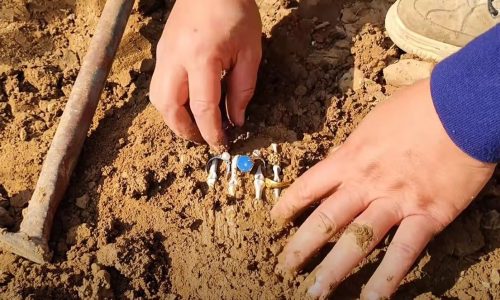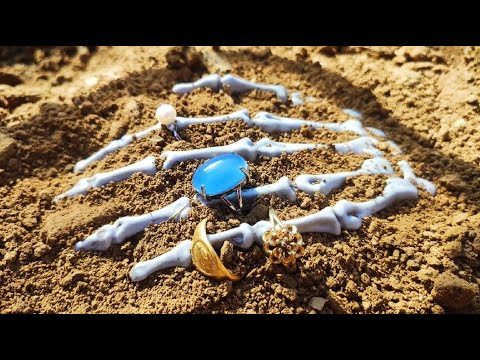
In the realm of archaeology and paleontology, discoveries often bring with them a sense of wonder and awe. From ancient civilizations to extinct creatures, the Earth’s history is filled with captivating mysteries waiting to be unraveled. However, sometimes these mysteries reveal themselves in the most unexpected of ways, as in the case of finding hidden treasures and diamonds within human bones.
“I found hidden treasure and dug up a diamond in a human bone.” This intriguing statement encapsulates a fascinating intersection of science, history, and human curiosity. In this article, we will embark on a journey to explore the remarkable phenomenon of discovering precious gems within the confines of human remains, shedding light on the scientific explanations, historical contexts, and the profound impact of such findings.
I. The Unusual Discovery
At first glance, the idea of finding diamonds within human bones may seem like something out of a fantastical tale. However, this phenomenon is very real and has occurred on several occasions in the annals of scientific history. The origins of these diamonds within bones can be traced back to natural geological processes and the intricate relationship between the Earth’s mantle and its living inhabitants.
A. Geology at Play
The Earth’s mantle, located beneath the planet’s crust, is a region rich in minerals, including diamonds. Diamonds are formed deep within the Earth, under extreme pressure and high temperatures. These conditions allow carbon atoms to arrange themselves into the crystal lattice structure that gives diamonds their renowned hardness and brilliance. Over millions of years, some of these diamonds make their way closer to the surface through volcanic eruptions, where they can be mined.

B. The Connection to Human Remains
Human bones, composed primarily of calcium and phosphorus, are porous structures that can absorb minerals from their surrounding environment. In regions where volcanic activity or geological processes bring diamonds closer to the surface, it is possible for these minerals to infiltrate human remains. Over time, the carbon atoms in the bones may undergo a transformation, resulting in the crystallization of diamonds within the bone matrix.
II. Historical Significance
The discovery of diamonds within human bones carries a profound historical significance, providing valuable insights into both the natural world and human civilization.
A. Ancient Civilizations
Throughout history, diamonds have held immense value and symbolism for various cultures. Ancient civilizations often regarded diamonds as symbols of power, purity, and protection. The presence of diamonds within human remains from these periods has sparked debates and discussions about their cultural and spiritual significance.

B. Modern Science
In the modern era, these discoveries have piqued the interest of scientists and researchers. They have become valuable specimens for studying the Earth’s geological history, as well as shedding light on the migration and lifestyle of ancient populations. Radiocarbon dating and spectroscopy techniques can provide valuable information about the age and origin of these diamonds, offering a unique glimpse into the past.
III. Scientific Investigations
The study of diamonds within human bones has evolved into a specialized field of scientific research known as “bio-mineralogy.” Scientists and archaeologists employ various methods to investigate these remarkable findings.
A. Radiocarbon Dating
Radiocarbon dating is a key technique used to determine the age of both the bones and the diamonds contained within them. By measuring the decay of carbon isotopes in the bone and comparing it to the known radioactive decay rate, researchers can estimate the age of the diamonds and their connection to the human remains.
B. Spectroscopy
Spectroscopy is used to analyze the chemical composition of the diamonds. This method can reveal information about the geological processes that led to the formation of these diamonds and their journey into the bones. It also helps identify any impurities or unique characteristics that distinguish these diamonds from others.
IV. Ethical Considerations
The discovery of diamonds within human bones raises ethical questions about how these findings should be handled and displayed. Some argue that these diamonds should be treated with utmost respect, given their connection to human remains. Others believe they should be used for scientific research and public education.
Conclusion
The phrase “I found hidden treasure and dug up a diamond in a human bone” embodies the extraordinary and captivating nature of scientific discovery. While the presence of diamonds within human remains may seem like a tale from the realm of fiction, it is a genuine phenomenon rooted in the Earth’s geological history. These remarkable findings provide a unique window into the past, offering insights into ancient civilizations, geological processes, and the profound connection between the Earth and its inhabitants.
As scientists continue to unravel the mysteries surrounding diamonds within human bones, one thing remains clear: the quest for knowledge and understanding knows no bounds, and it can lead us to uncover hidden treasures in the most unexpected places.






